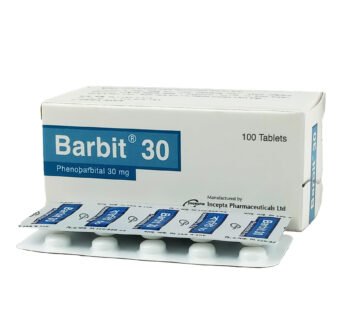Description
Indications
Dieta tablets are prescribed for the following conditions:
- As an adjunct to diet and exercise to reduce blood glucose levels in patients with non-insulin-dependent diabetes mellitus (Type II diabetes) when dietary management and physical activity alone are insufficient for glycemic control.
- In combination with metformin when neither diet, exercise, nor monotherapy with Dieta or metformin provide adequate glycemic control.
- In conjunction with insulin therapy to lower blood glucose levels in patients who do not achieve sufficient control with diet, exercise, and oral hypoglycemic agents alone.
- The combined use of Dieta and insulin may increase the risk of hypoglycemia.
(Take medication as per the advice of a registered physician.)
Pharmacology Glimepiride, the active ingredient in Dieta, belongs to the sulfonylurea class of antidiabetic agents and helps reduce blood glucose levels. It primarily works by stimulating insulin secretion from pancreatic beta cells, enhancing their sensitivity to glucose. Additionally, it may reduce basal hepatic glucose production and increase insulin sensitivity and glucose uptake in peripheral tissues. In non-fasting diabetic patients, a single dose of Glimepiride can maintain its hypoglycemic effect for up to 24 hours.
Dosage The dosage of Glimepiride is individualized based on blood glucose levels and should be the lowest effective dose for metabolic control. Regular monitoring of blood and urine glucose is necessary to determine dosage adjustments and detect therapy failure.
- Initial Dose & Titration: Typically, treatment starts with 1 mg once daily. If necessary, the dose can be gradually increased based on blood glucose monitoring, usually in 1-2 week intervals, following this sequence: 1 mg → 2 mg → 3 mg → 4 mg → 6 mg.
- Maintenance Dose: Most well-controlled patients require 1-4 mg daily.
- Dose Administration: The physician determines the timing and distribution of doses based on the patient’s lifestyle. A single daily dose is usually sufficient and should be taken immediately before a substantial breakfast or the first main meal of the day.
- Secondary Dose Adjustment: As glycemic control improves, insulin sensitivity may increase, necessitating a reduction or discontinuation of Glimepiride to prevent hypoglycemia. Dose adjustments may also be required with lifestyle changes, weight fluctuations, or other factors affecting glycemic control.
- Switching from Other Oral Antidiabetics: When transitioning from other oral hypoglycemic agents to Glimepiride, the initial daily dose remains at 1 mg, even if switching from a maximum dose of another medication. Further dose adjustments should follow the standard titration guidelines.
(Take medication as per the advice of a registered physician.)
Administration Glimepiride tablets should be swallowed with a sufficient amount of liquid.
(Take medication as per the advice of a registered physician.)
Drug Interactions Potential drug interactions with Glimepiride include:
- Drugs that may enhance hypoglycemic effects: Insulin, other oral antidiabetic agents, ACE inhibitors, anabolic steroids, azapropazone, chloramphenicol, fibrates, fluconazole, fluoxetine, MAO inhibitors, miconazole, quinolones, salicylates, sulfonamide antibiotics, and tetracyclines.
- Drugs that may reduce hypoglycemic effects: Barbiturates, calcium channel blockers, corticosteroids, diuretics, glucagon, isoniazid, laxatives, nicotinic acid (high doses), phenothiazines, phenytoin, rifampicin, sympathomimetics, and thyroid hormones.
- Variable effects on glycemic control: H2-receptor antagonists, beta-blockers, clonidine, and reserpine may either enhance or weaken the glucose-lowering effect.
- Alcohol interaction: Both acute and chronic alcohol intake can unpredictably alter the efficacy of Glimepiride, either increasing or decreasing its activity.
Contraindications Glimepiride should not be used in:
- Type I diabetes mellitus
- Diabetic ketoacidosis
- Diabetic coma
- Patients with hypersensitivity to Glimepiride, sulfonylureas, or sulfonamides
- Severe liver dysfunction
- Severe renal impairment or dialysis patients
Side Effects Potential side effects include:
- Hypoglycemia
- Temporary visual disturbances
- Nausea, vomiting, diarrhea, and abdominal pain
- Urticaria (hives)
- Decrease in blood pressure
Pregnancy & Lactation
- Glimepiride should not be used during pregnancy. Patients planning pregnancy should consult their physician to switch to insulin therapy.
- As Glimepiride may pass into breast milk and harm the infant, it should not be taken while breastfeeding. Either breastfeeding should be discontinued, or an alternative treatment should be considered.
Precautions & Warnings
- The risk of hypoglycemia is higher during the initial weeks of treatment, requiring close monitoring.
- Hypoglycemia can usually be managed by consuming carbohydrates (glucose or sugar) promptly.
Overdose Effects
- Overdosage of sulfonylureas, including Glimepiride, can lead to hypoglycemia.
- Mild hypoglycemic symptoms can be managed with oral glucose and dietary adjustments.
- Severe hypoglycemic reactions (coma, seizures, neurological impairment) require emergency hospitalization. Treatment includes intravenous administration of concentrated glucose solution followed by continuous glucose infusion to maintain blood sugar levels above 100 mg/dL.
- Patients must be monitored for at least 24-48 hours as hypoglycemia may recur after apparent recovery.
Therapeutic Class Sulfonylurea Antidiabetic Agents
Storage Conditions
- Store below 30°C.
- Keep away from direct light.
- Keep out of reach of children.










Reviews
There are no reviews yet.